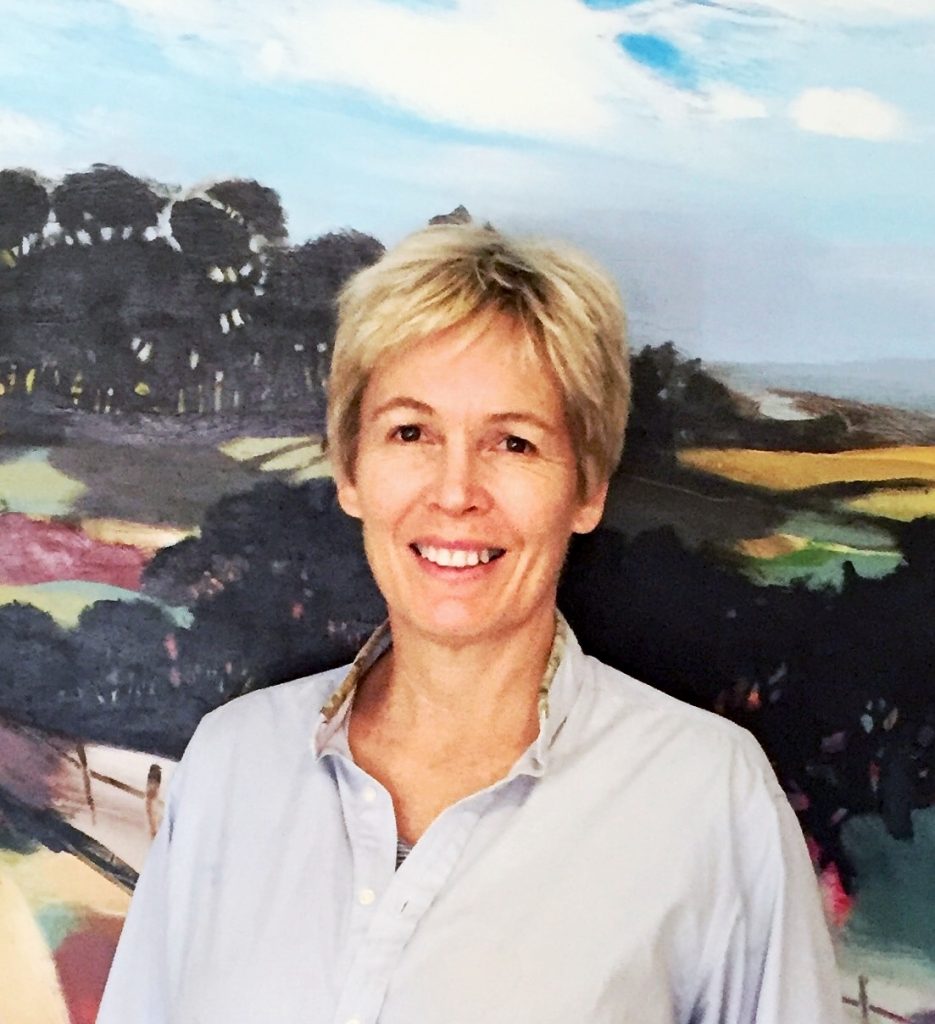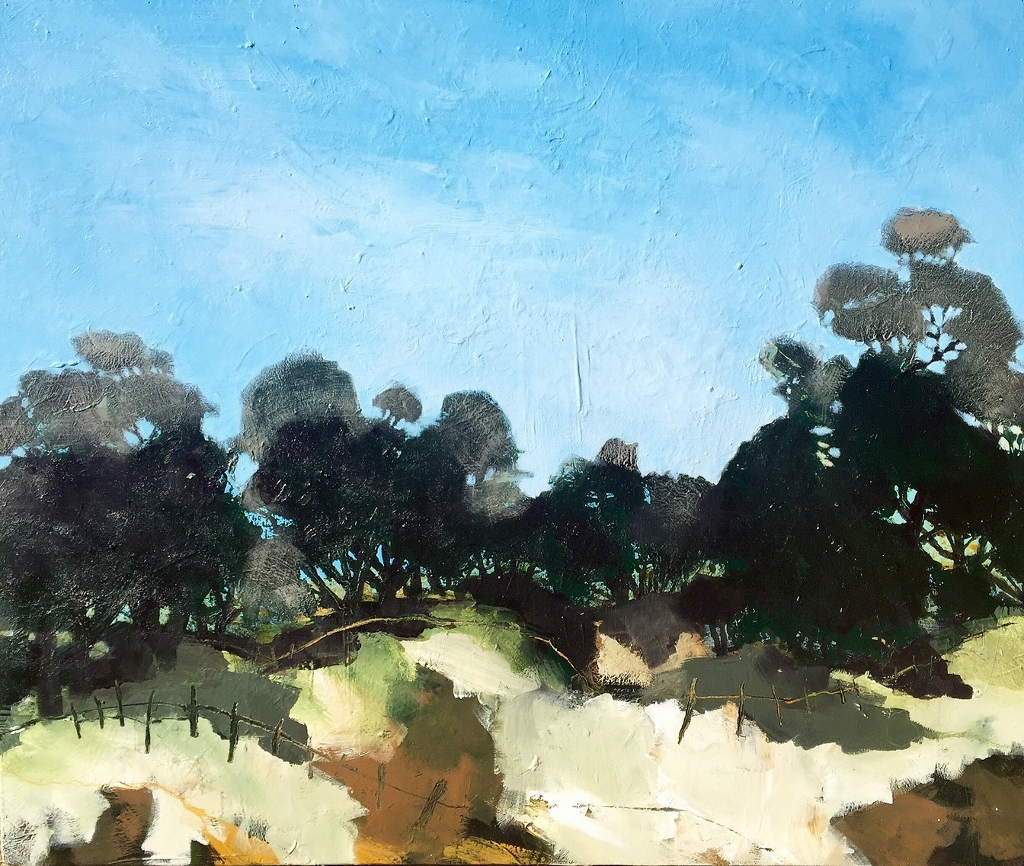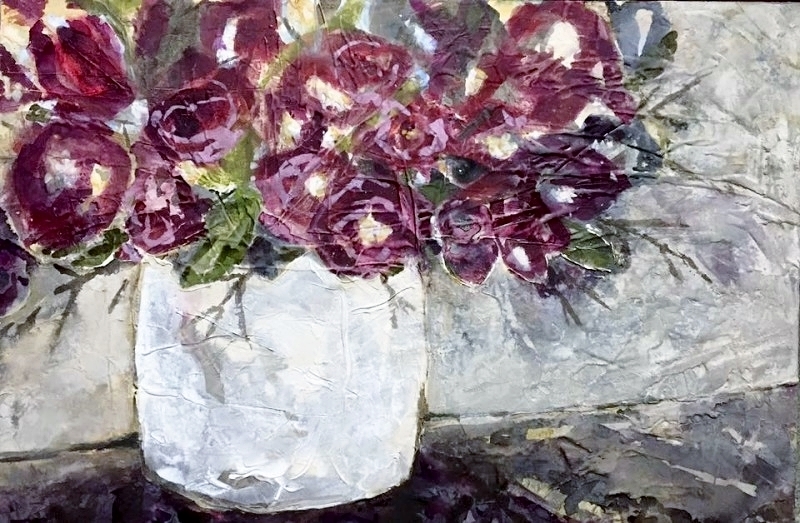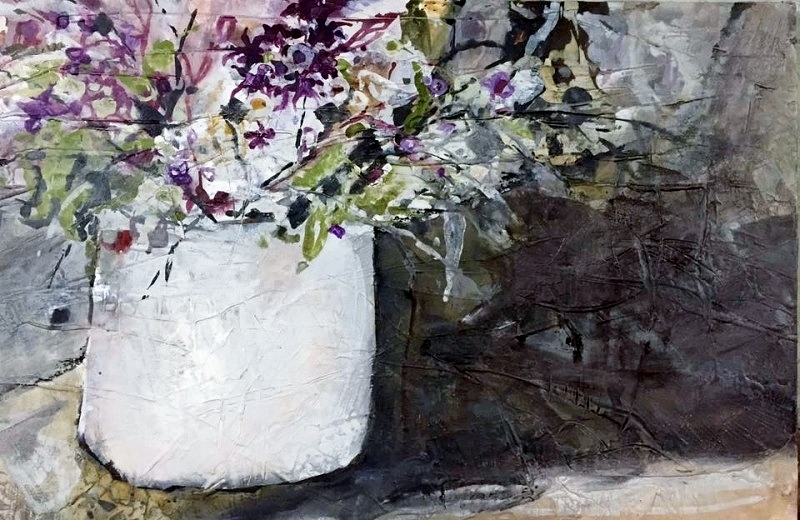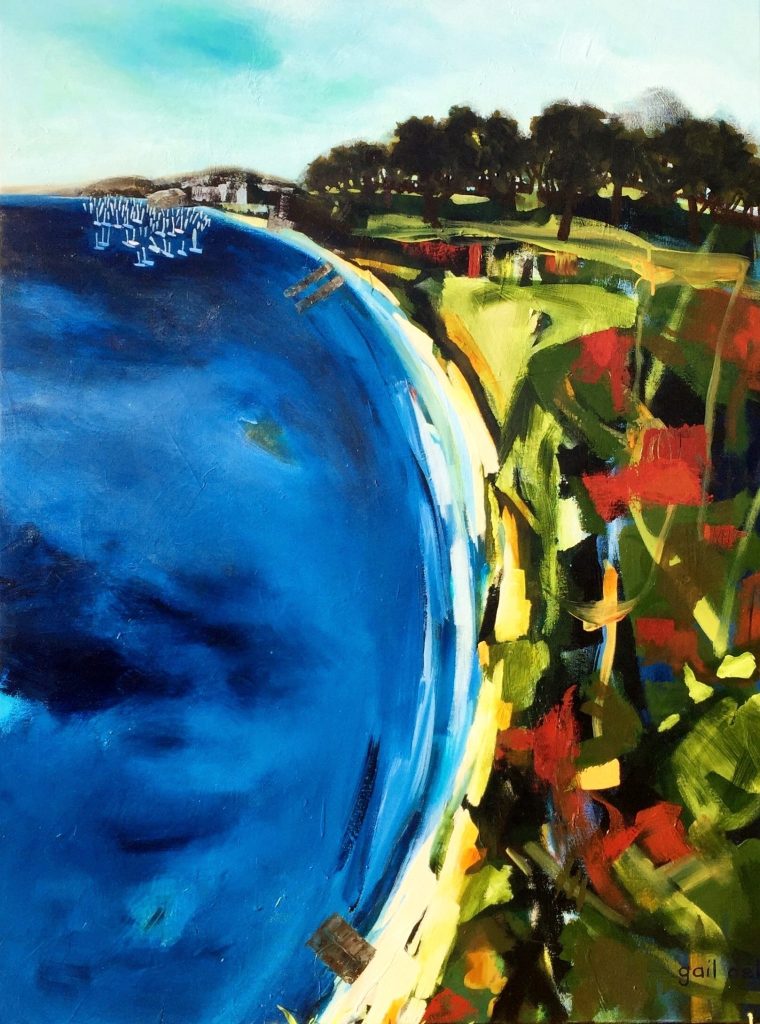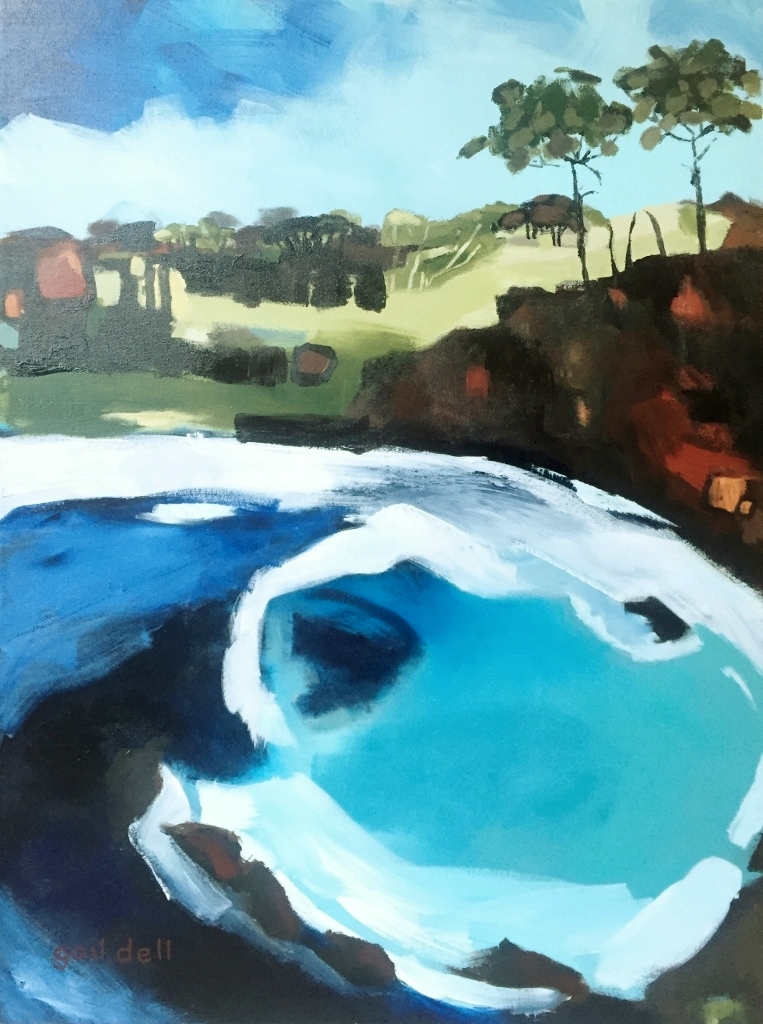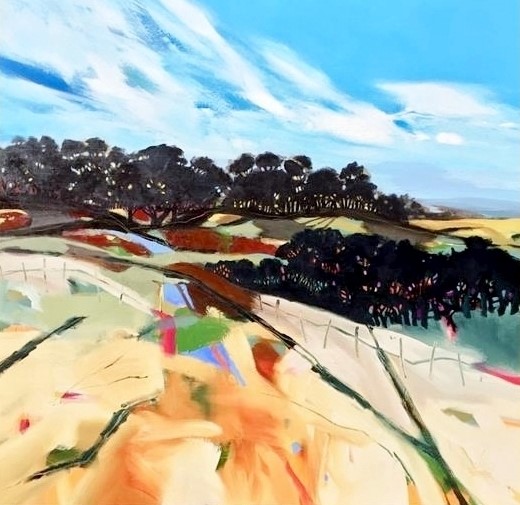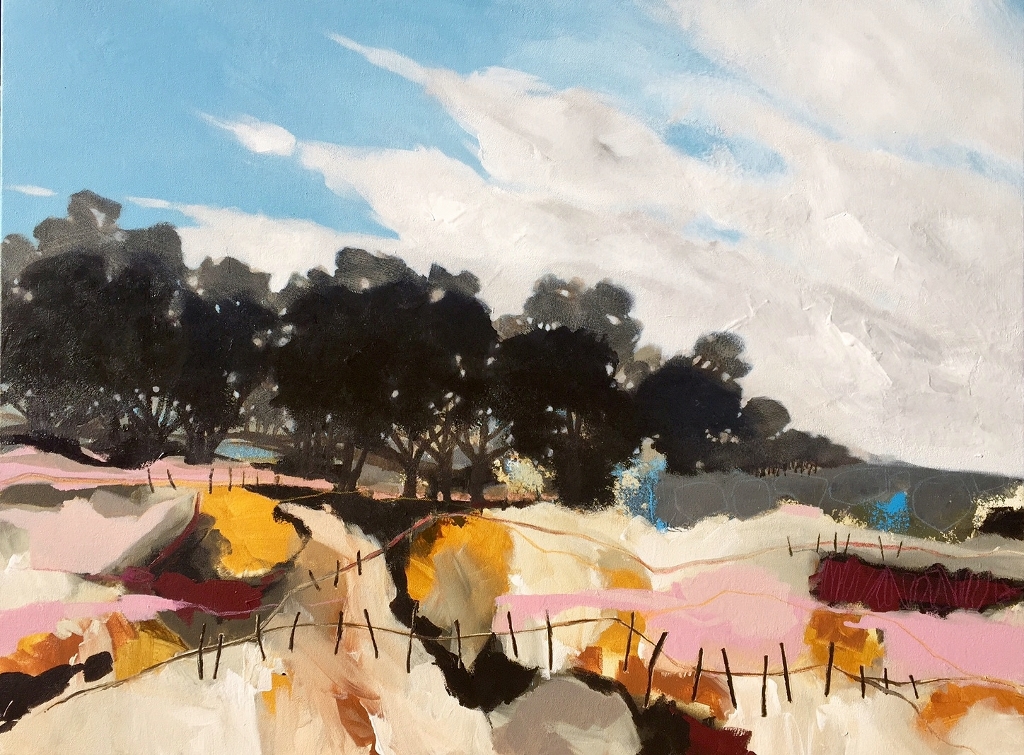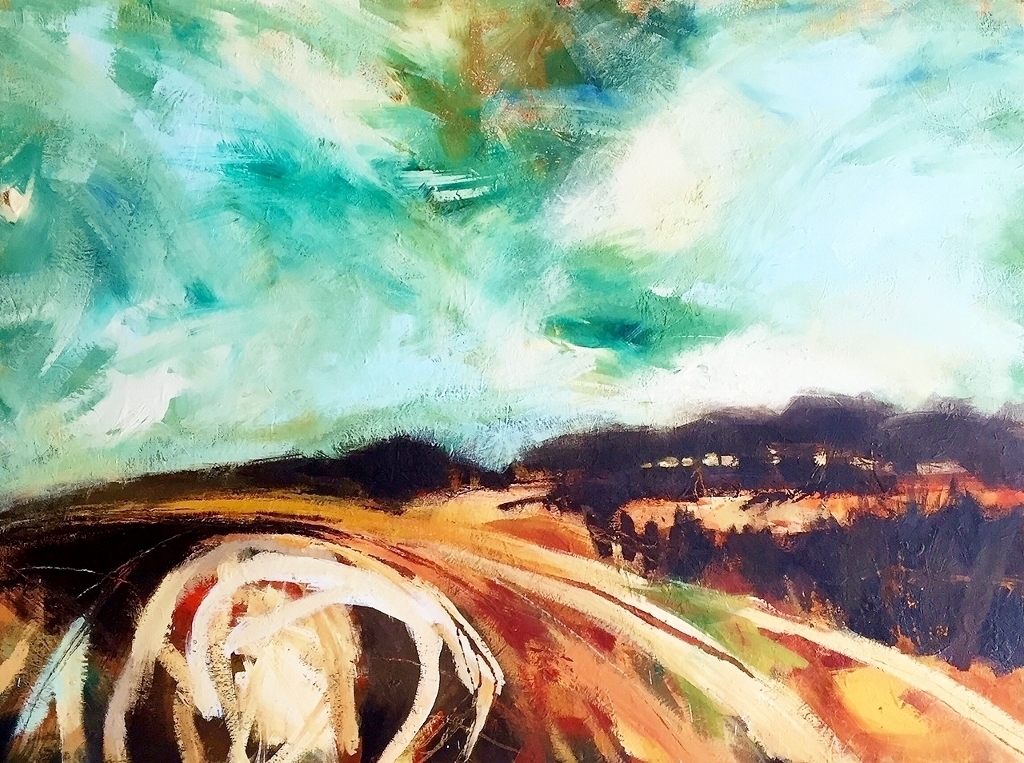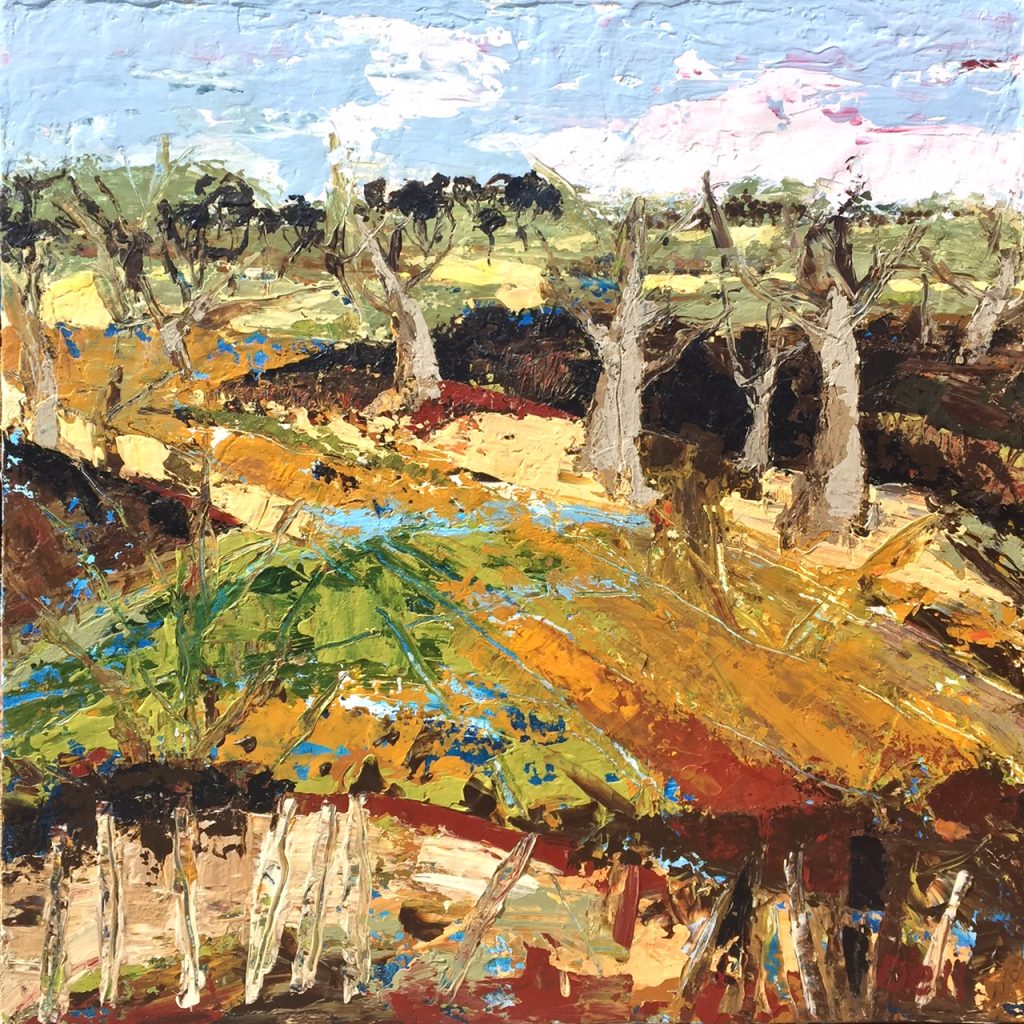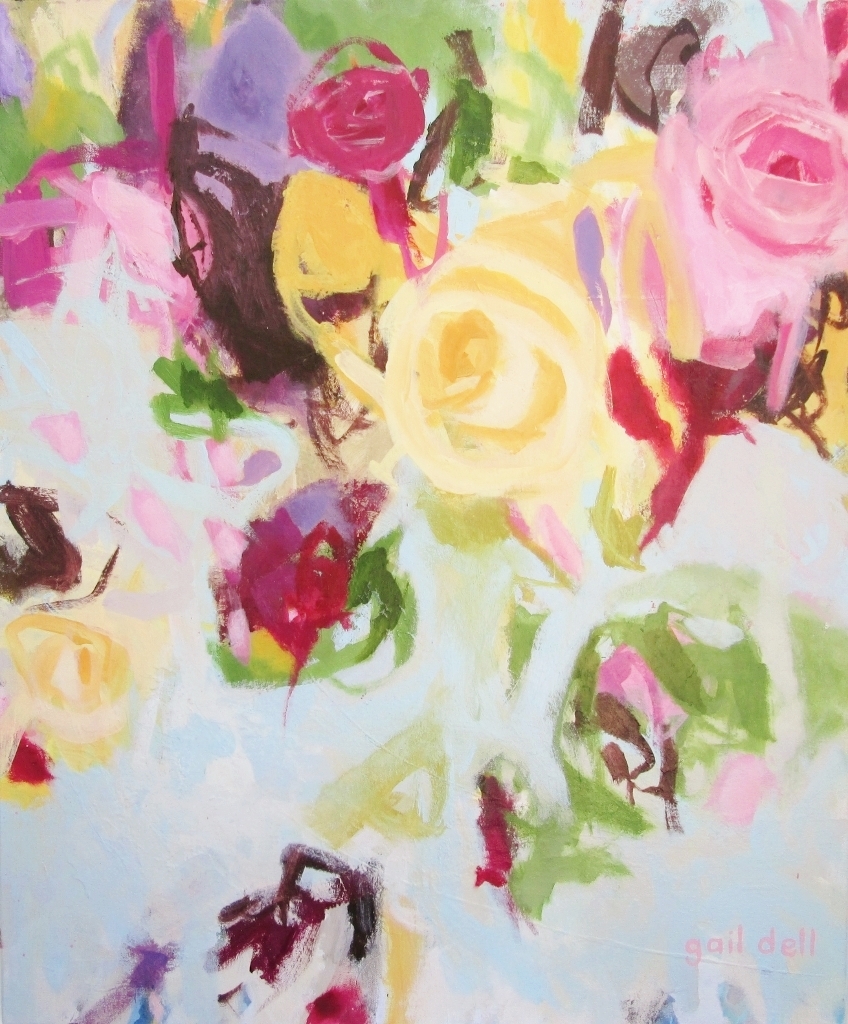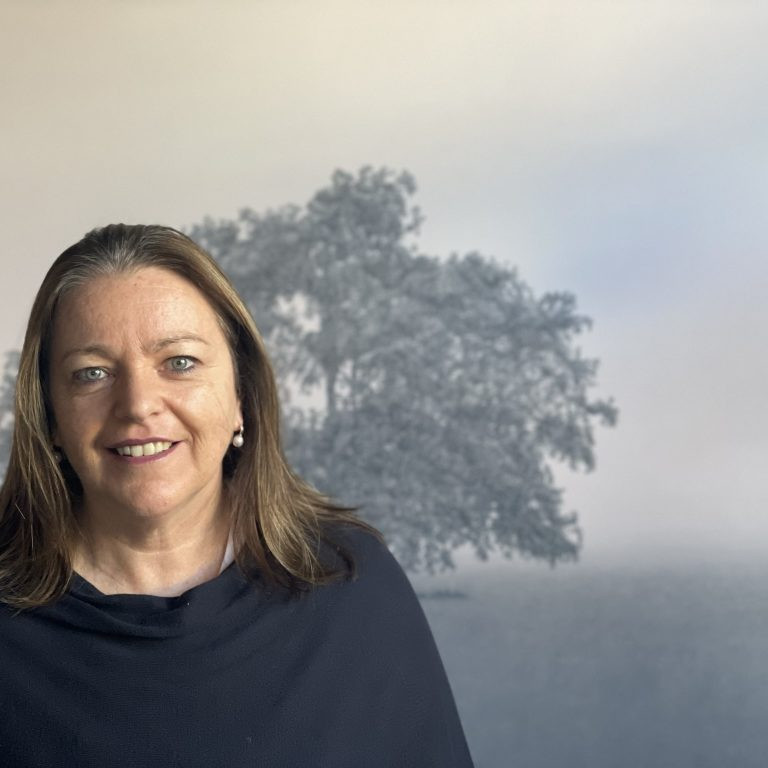Gail Dell Painter - Perth, Australia
Your work is often described as ‘playful’ what are your own thoughts on this in relationship to your work?
I find that life in the studio requires a happy marriage of play, discipline and perseverance, but I think my determination to create stems from the challenge of not being able to have children of my own. After many years I have managed to turn this life-event into something happy and purposeful. So I imagine painting gives this part of me a voice and a physical presence that I otherwise wouldn’t have had. I like to think an indelible resonance of this joy rests in each painting – a playful part of me that will remain long after I am gone.
Late Summer, Mixed Media, on cradled board, 92 x 63cms
You make the comment ‘we should paint without resistance or self- criticism.’ Can you expand on this in regard to your art teaching?
As an artist we must learn to manage a whole new level of vulnerability. Silencing the voice of self-criticism can be our biggest challenge. This can adversely affect our work, one outcome being that our work becomes tighter and tighter. I wanted to facilitate a process, as much for myself as for other artists, in response to a comment I’d heard over and over again “I wish I could loosen up a bit”. I developed a workshop called ‘Fast and Loose’. It is more about changing cognitive and behavioural patterns than learning a new technique. The purpose was to unlock resistance and tame the inner critic by getting ourselves out of the way. Painting from the shoulder, large format exercises, large brushes, fast, uncalculated and free. It’s wild, unravelling and cathartic. It enables participants to paint with less resistance and move into exciting new territory.
How has John Cullingworth influenced your art practice?
I come from a big, happy family of artists. John, my father, is a well-regarded painter and traditionally trained and a master of design and branding. His guidance and encouragement has been invaluable to me. He instilled in me a deep confidence as an artist and gave me courage to try anything. How to see value, tone and structure in the environment – how to really look. How changing the tiniest thing changes the whole piece. He taught me to ‘suggest’ things in the work ‘let the mind make up the rest of the story’. I use that all the time and is probably the reason why I love painting in a semi-representational style. He taught me not to be prescriptive, but gave me confidence to suggest a narrative, to encourage exploration and invite comment and alternate views. He is 87 now and still critiques my work via skype. I have learned to value strong opinions, because of him. I love him especially for that.
Explain the way you use cropping in many of your floral works.
La vie en Rose, inks and pigments on fresco paste panel, 107 x 77cm framed
I love the Impressionists. Like me, they broke a lot of rules and moved the traditional focal point from the centre of the painting. These two paintings are the asymmetrical effects of cropping, meaning the design or overall composition and focal point is off-centre. Each of these elements helps to create a sense of motion and playfulness within a painting. The subject is less obvious and I like to suggest something beautiful by showing only part of it. I like to leave space for curiosity and for the viewer’s mind to make up the rest of the story and to evoke their own memories. These paintings were part of a series I did on marble fresco paste, where the pigments and washes sink into the surface and become part of the surface. A technique I love and learned overseas.
Dans le Jardin, inks and pigments on fresco paste panel, 107 x 77cm framed
How has the Australian coast affected your paintings?
The power of place is crucial to our identity as human beings. I came from Africa to make a new home in Australia 20 years ago. The process of painting the landscape has been integral to my sense of belonging and identity as an Australian. When landscape and people come together they create a place, but I find it takes a journey of time and experience to belong.
Matilda Bay, acrylic on canvas, 120 x 91cm
Australia is a land of such strong contrast – I wanted to explore the way the water and the land experience each other in my current series works. You will see these coastal paintings have strong structural areas of rock and stone. Even as the land meets the sea the colours are bold and defining. Unforgiving. From extreme temperatures – dry, hot land forms and resilient native bush land – to the soft cool movement of the ocean. My challenge was to marry the contrasting and multi-sensory experience of nature in an abstract way.
My Favourite Place, acrylic on canvas, 106 x 80cm framed
Can you compare the difference in the colours you use in your coastal and inland paintings and why?
The palette of coastal and inland work varies according to the region, the light and the experience. My earlier work is a response to the Kimberley region of WA from an aerial perspective. The environment is pristine and is bright orange to red gold with a coastal palette of pthalo hues and aqua blues.
The Lay of the Land, acrylic on canvas, 150 x 150cm
More recent paintings have a palette of blues, greens, umbers and siennas. As I paint nature the experience of how the environment occurs to me, informs my palette. Australia generously offers me a colourful jewellery box of delight to choose from.
Everlastings, oil over acrylic on canvas, 102 x 76cm
Where do you do your work?
I paint in my studio and work from my own mental notes. I paint spontaneously and expressively with bold sweeping brushstrokes that sum up whole passage of the landscape, seascape or floral work. I often rework paintings over 3-4 weeks until the conversation rests.
Off the Beaten Track, oil over acrylic on canvas, 120 x 91cm
I find it really challenging to paint en plein air or anywhere that isn’t still. I have learned that I need to paint without the distraction of a sensory overload. I love to gather data by looking and being in the environment. I routinely walk in nature and take photographs as a reference or as a trigger to remember a place, the smell, the feeling etc. Back in the studio a lot of time spent in contemplation to bring all the information together in a cohesive way. I have to allow the narrative to fall into place. I don’t mark up the work beforehand or work from a visual reference, I just begin and usually paint across 3-5 works at a time.
I need to get to a point where I am absent and my mind is quiet enough for the work to become present . I would say the bones of new work are born out of the quiet times, the abstract thoughts and gazes, the feelings and the remembered places.
What are some of the techniques you have developed in your more recent work?
Does discipline and hard work count? I am always on a steep learning curve and I am hungry for new knowledge and love putting new ideas into practice – I am never short of inspiration.
I recently tried a cold wax workshop and enjoyed the seductive nature of the medium. I like to scratch through surfaces (sgraffito) to reveal substrate colours using a palette knife or the back of a paint brush.
Using brushes and paint is luscious – I paint straight from the pot of paint or tube, I use very little water, if any. If I need to move paint around, I add a flow medium to it. I don’t mix much on a palette, I work directly onto the surface using an alla prima (wet on wet) approach.
Adding texture to the surface before it starts to dry – I like adding multiple layers, glazes and marks adding complexity and depth to the works.
Using a variety of mediums – acrylic allows me to express immediacy and spontaneity and to work quickly if I need to. I also use oil sticks and ink glazes, graphite and pigmented cold wax.
Working across a range of surfaces – paper, panel, canvas and fresco paste, which is like a thick marble gesso – a homemade recipe given to me by a retired Italian artisan.
River Crossing, Impasto acrylic and oil sticks, on cradled board, 91 x 91cm
You have representation in Australia and the UK, discuss the similarities and differences in these two markets.
The process of securing representation anywhere in the world is surprisingly similar. It takes an enormous amount of focused research to place your inquiry or submission correctly. I think a level of tenacity, perseverance and good grammar is necessary to manage a marketing platform overseas, or anywhere, for that matter.
It took me two years of hard work to get into the UK and be part of the hugely successful Affordable Art Fair (AAF) circuit. I am delighted that my abstracted florals have been selected for their innovative promotional campaign in September. Through boomf.com – they will print my artwork onto marshmallows ! I love the idea that visitors will eat my art !
Yes, the markets are different, and the level or art awareness is different too. I think you have to dive in and see where your work sits in the psyche of a place, before you know how to make the most of the opportunity. Creative flexibility and an ability to use constructive comment to your advantage, is invaluable. My work was full of light and strong colour – I learned that a winter show in London responds better to muted tones. The summer shows loved the colour. I learned the market is very seasonally responsive.
Painting in Australia I can be more experimental as I am innately in sync with the environment that I represent – and the viewer is able to identify with the work more easily.
Abstracted floral – Love is in the Air 90 x 76cm
Can you give some comments that you pass on to young or new artists?
It all depends on what you are aiming for. If you want to be a career painter I would suggest you find a mentor, anyone in the world that is a good artist whose work you love, that is busy and successful. ‘Friend’, ‘Like’, send them an email. Connect with them and start a conversation.
Learn as much as you can by trying new techniques. You don’t know what may grab you if you haven’t tried it. Be brave, make lots of mistakes. Magic and mistakes live in the same paint pot.
Develop a good understanding of digital marketing platforms and business administration. It’s a brave new world out there, be prepared to manage your own career path and success.
Opinions are valuable, don’t be offended, use them as an opportunity to grow. Infact welcome them. I say ‘thank you so much, I hadn’t seen it that way’. Build bridges.
Add your name to gallery mailing lists. Attend openings, talk to other artists, ask to visit their studios. I love talking to young artists that have made the effort to attend an opening or visit an exhibition.
When you visit other cities go to galleries that are a little ‘off the map’ too. Not all the exciting artists are in the national galleries and museums.
Stay curious and open. Never stop learning.
Contact details.
Gail Dell
Website – www.gaildell.com
Facebook – www.facebook.com/GailDellArtist/
Gail Dell, Perth, Australia
Interview by Deborah Blakeley, September, 2016
Think a colleague or friend could benefit from this interview?
Knowledge is one of the biggest assets in any business. So why not forward this on to your friends and colleagues so they too can start taking advantage of the insightful information the artist has given?
Other artists you may be interested in:


